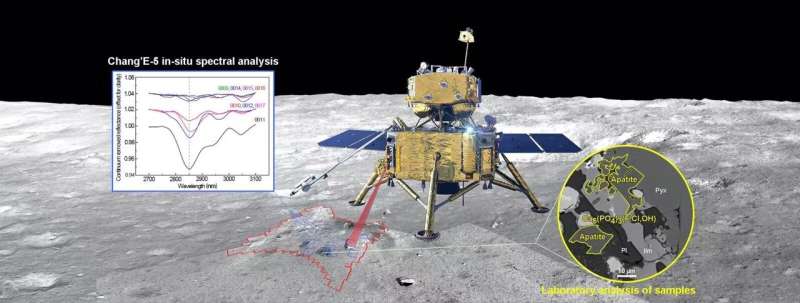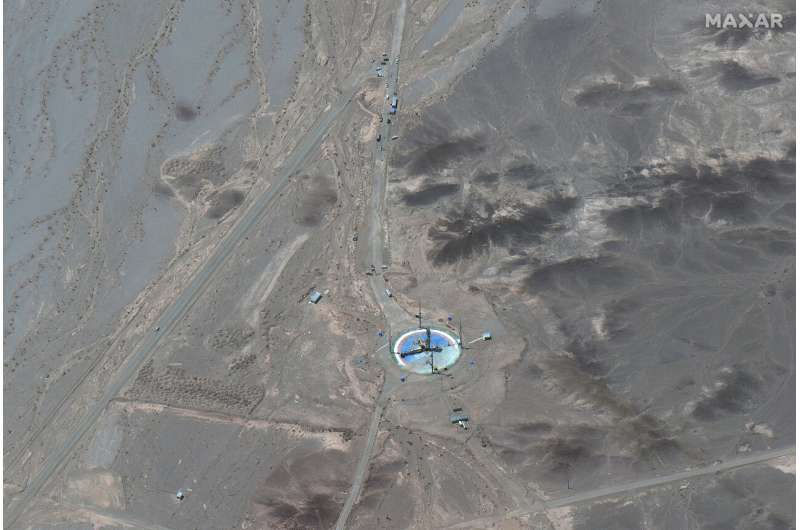
Copernical Team
Study reveals how some high-energy particle 'jets' lose energy
 Scientists studying particle collisions at the Relativistic Heavy Ion Collider (RHIC) have revealed how certain particle-jets lose energy as they traverse the unique form of nuclear matter created in these collisions. The results, published in Physical Review C, should help them learn about key "transport properties" of this hot particle soup, known as a quark-gluon plasma (QGP).
"By looki
Scientists studying particle collisions at the Relativistic Heavy Ion Collider (RHIC) have revealed how certain particle-jets lose energy as they traverse the unique form of nuclear matter created in these collisions. The results, published in Physical Review C, should help them learn about key "transport properties" of this hot particle soup, known as a quark-gluon plasma (QGP).
"By looki Airbus brings leading-edge digital capabilities to Multi-Domain Military Operations
 In today's world of rapidly evolving global security challenges, the ability to collect, analyse and utilise data for decision-making and response is more important than ever.
By applying its leading-edge digital capabilities to Multi-Domain Military Operations, Airbus provides seamless integration solutions that connect mission-critical military platforms and systems worldwide across all
In today's world of rapidly evolving global security challenges, the ability to collect, analyse and utilise data for decision-making and response is more important than ever.
By applying its leading-edge digital capabilities to Multi-Domain Military Operations, Airbus provides seamless integration solutions that connect mission-critical military platforms and systems worldwide across all Amsterdam physicists build an atom laser that can stay on forever
 Imagining our everyday life without lasers is difficult. We use lasers in printers, CD players, pointers, measuring devices, and so on. What makes lasers so special is that they use coherent waves of light: all the light inside a laser vibrates completely in sync.
Meanwhile, quantum mechanics tells us that particles like atoms should also be thought of as waves. As a result, we can build '
Imagining our everyday life without lasers is difficult. We use lasers in printers, CD players, pointers, measuring devices, and so on. What makes lasers so special is that they use coherent waves of light: all the light inside a laser vibrates completely in sync.
Meanwhile, quantum mechanics tells us that particles like atoms should also be thought of as waves. As a result, we can build ' Air-breathing hypersonic weapon delivers value and performance
 Two core technologies are at the heart of the U.S. pursuit of hypersonic weapons, or those that travel Mach 5 or faster: scramjets, which derive propulsion from the air around them, and boost-glide systems, which use a rocket motor to reach the edge of space and then descend to their target.
Raytheon Missiles and Defense, a Raytheon Technologies business, is making significant investments
Two core technologies are at the heart of the U.S. pursuit of hypersonic weapons, or those that travel Mach 5 or faster: scramjets, which derive propulsion from the air around them, and boost-glide systems, which use a rocket motor to reach the edge of space and then descend to their target.
Raytheon Missiles and Defense, a Raytheon Technologies business, is making significant investments FAA requires SpaceX to make environmental changes to Starbase in Texas
 The Federal Aviation Administration on Monday said SpaceX will be required to make more than 75 changes to the orbital launch program at its Starbase launch site in Texas after determining there would be some environmental impacts to the surrounding area.
Elon Musk's SpaceX must obtain either an experimental permit or a vehicle operator license from the FAA for Starship and Super Heavy
The Federal Aviation Administration on Monday said SpaceX will be required to make more than 75 changes to the orbital launch program at its Starbase launch site in Texas after determining there would be some environmental impacts to the surrounding area.
Elon Musk's SpaceX must obtain either an experimental permit or a vehicle operator license from the FAA for Starship and Super Heavy Supermoon delights skygazers around the globe

From Frankfurt and New York to Istanbul and Beijing, skygazers could enjoy a beautiful supermoon rise over the horizon in an impressive astronomic spectacle.
The full moon appeared bigger than normal and sometimes slightly orange-colored as it lit skies around the globe.
It reached its full stage on Tuesday during a phenomenon known as a supermoon because of its proximity to Earth. It's also referred to as the "Strawberry Moon" because it's the full moon at strawberry harvest time.
In Frankfurt, it rose behind the German city's banking district's skyline, while in Beijing the forbidden city's roof decorations depicting sacred beasts were silhouetted in sharp black by the moon.
The moon also illuminated New York City's Statue of Liberty and shone on the pillars of the ancient temple of Poseidon at Cape Sounion south of Athens, Greece.
Hera asteroid mission’s first step
 Image:
Hera asteroid mission’s first step
Image:
Hera asteroid mission’s first step From the Earth to the Moon and on to Mars – ESA and NASA take decisions and plan for the future
Press Release N° 30–2022
The next steps in exploring and using space for the benefit of European citizens were this week on the agenda at ESA’s Council meeting in ESA/ESTEC, the Netherlands on 14 and 15 June. The possibility of the first-ever European astronaut to set foot on the Moon, a telecommunication satellite for lunar exploration and a mission to return precious rock samples from Mars were all discussed.
China's lunar lander finds evidence of native water on moon

Samples from the Moon's Oceanus Procellarum, an ancient mare basalt whose name translates to "Ocean of Storms," may be able to help determine the source of lunar water.
China's lunar lander Chang'E-5 delivered the first real-time, on-site definitive confirmation of water signal in the basalt's rocks and soil via on-board spectral analysis in 2020. The finding was validated through laboratory analysis of samples the lander returned in 2021.
Satellite images suggest Iran preparing for rocket launch


